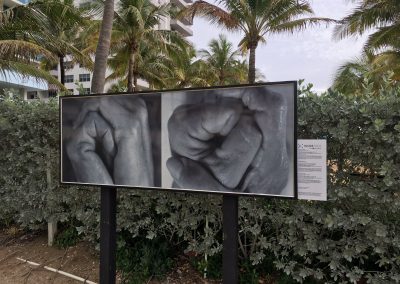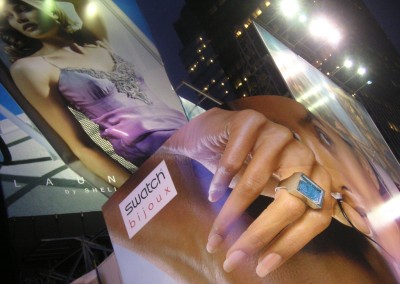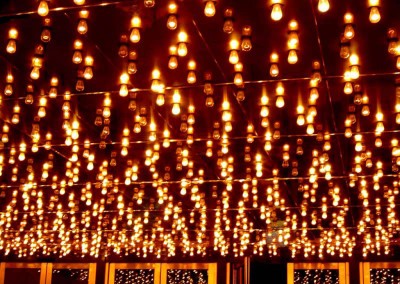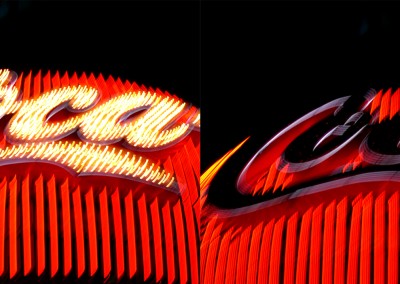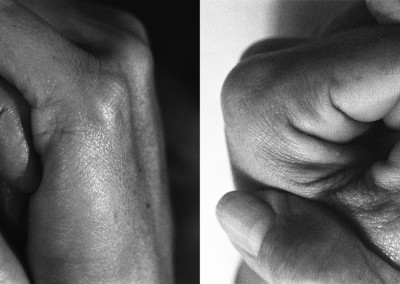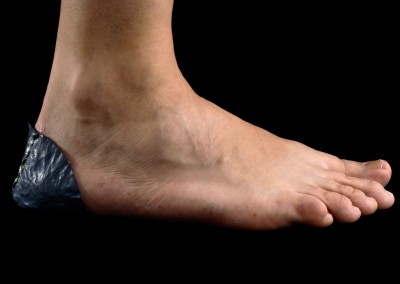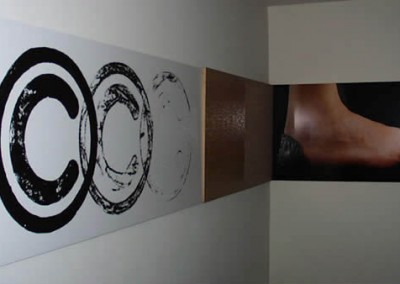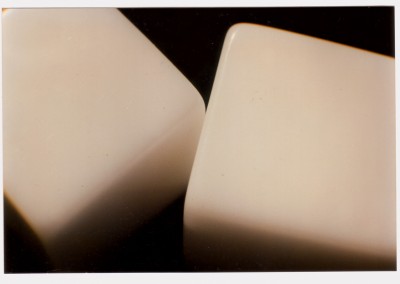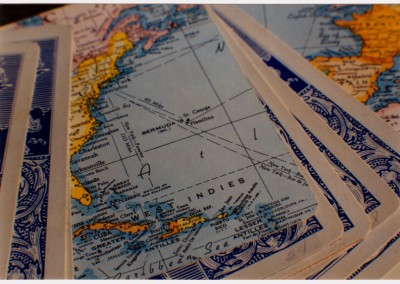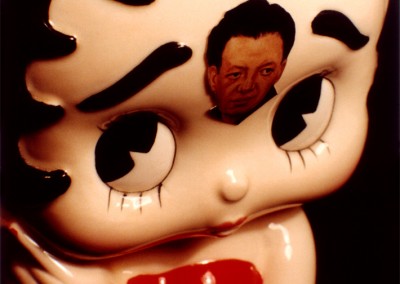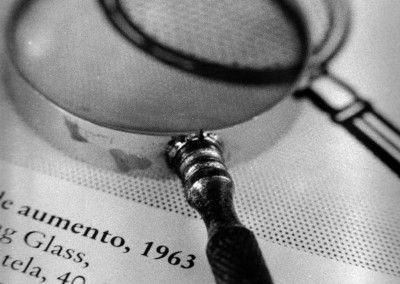photography
Castañeda’s first photographic work was a portrait of her mother conceived in book form. This work, A History in 70 Pages (1988) considers the documentary nature of photography as a testimony, relating images and information in a linear format. Photography remains a tool in Castañeda’s larger practice, including installations. In 1997, at Lehman Maupin Gallery in New York, Castañeda and
Quisqueya Henriquez used the photographic image to disrupt a spatial configuration. This installation was made in Photoshop, where they generated an image of columns mirroring existing architectural structures that ordered this prominent gallery. The scenographic character of this work lets the spatial aspect of scale become the work’s content. The real space of the gallery had two columns. The
wallpaper mirrored the columns creating a progression of columns suggesting a metaphor for infinite space. Since that intervention, Castañeda has embraced the camera. She composes extensive series that formulate multi-dimensional narratives through the ‘capture’ of different aspects of history, physiognomy, iconic representation, culture, and tradition. Speed-Split (1998) is a series of photographs
composing a moving story of place and people. This set of images includes a ferris wheel and a sequence of photographs of spiraling bodies, mother and daughter, who together form one gesture. Evidence (2001) is a dramatic storyboard that calls into question how events are construed through their telling. The historic reference is the murder of Gianni Versace on Miami Beach. Castañeda wields her camera with a scenographer’s attention to detail, scale, and setting in an effort to retell familiar stories through the appropriation and subversion of iconic symbols.
(From “A Map Of Four Decades” by Yasmeen Siddiqui to ” For Rent: Consuelo Castaneda” Exhibiton at Americas Society. 2011)

